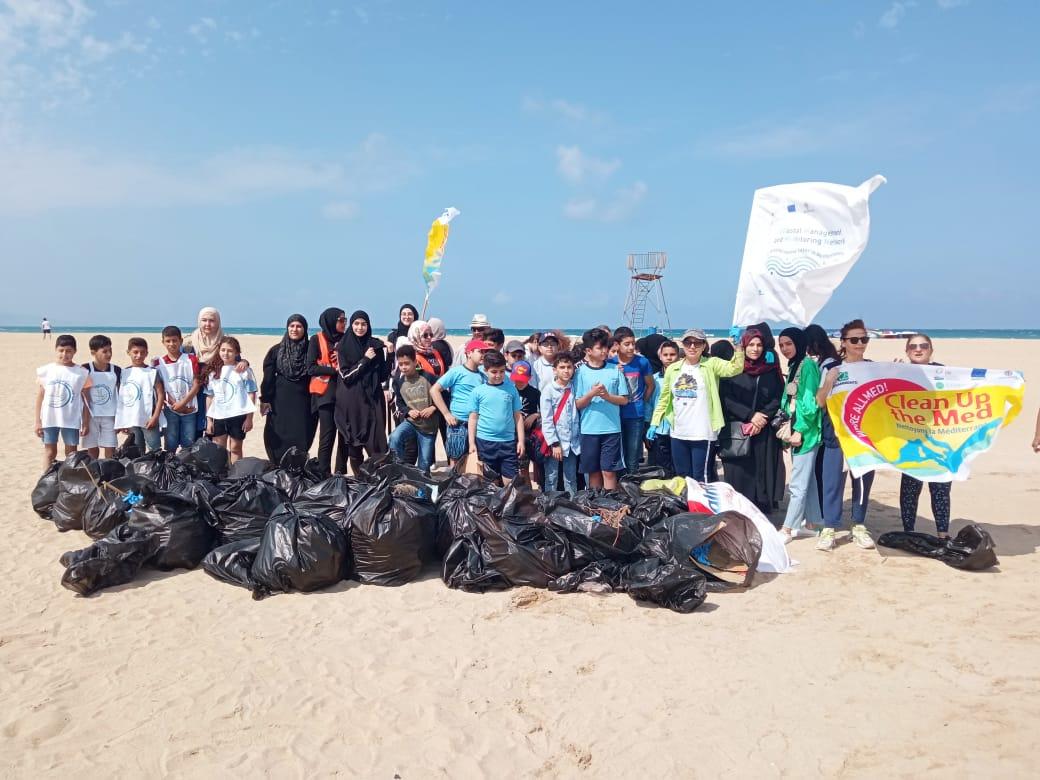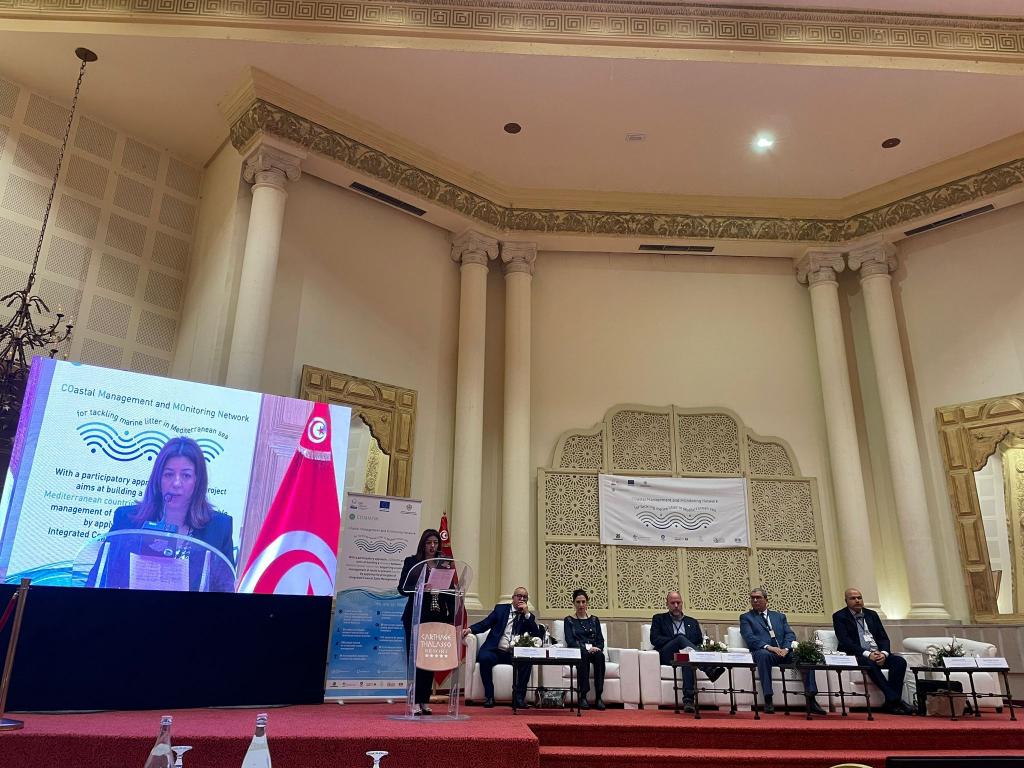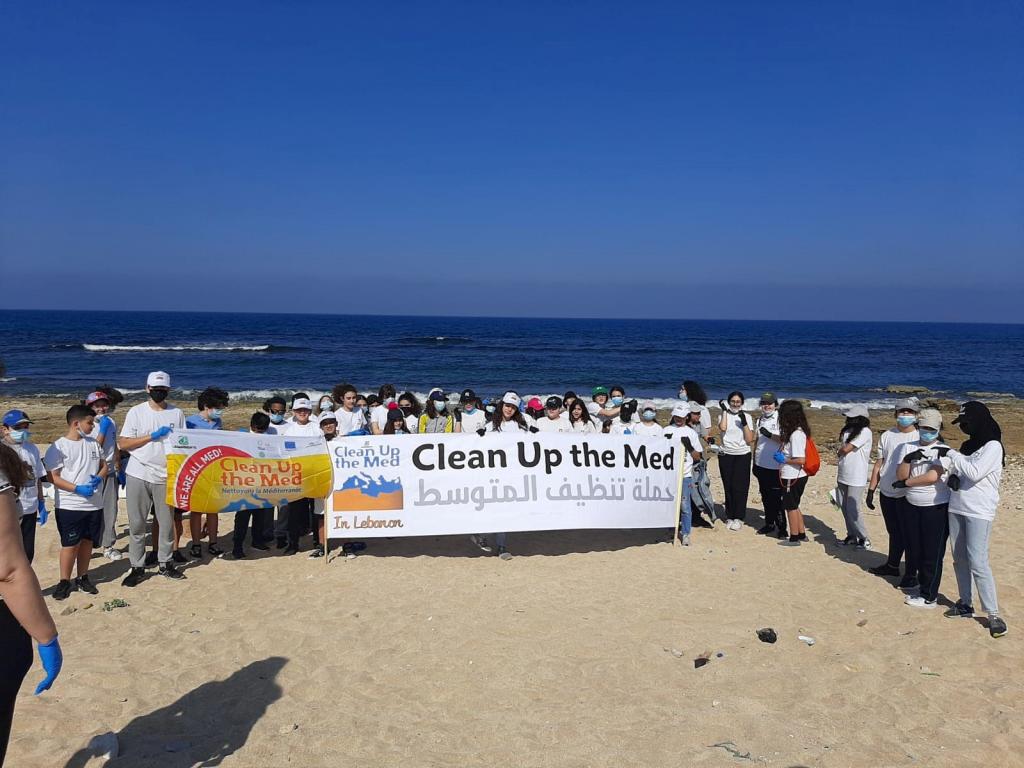EU-funded COMMON project builds transnational network of organisations to protect Mediterranean Sea from marine litter

Plastic accounts for 80% of the marine litter dispersed in the marine and coastal environment: of the over 90,000 objects collected on the beaches and analyzed using scientific protocols, harmonized among the different project partners, 17,000 (around 20%) were cigarette butts, and 6,000 were cotton buds. Of the over 700 specimens from 6 fish species that were analysed, one out of three fish ingested microplastics and more than half of the analyzed sea turtles were found to have ingested litter.
The data obtained during the 3-year project confirms the impact of marine litter and microplastics on Mediterranean biodiversity, which is not only related to the physical harm to marine species but also the potential ecotoxicological effects related to the leaching of toxic compounds present in plastic particles both as additives and adsorbed contaminants.
ìIn brief, this is what emerged from the monitoring activities of the COMMON project in 3 Mediterranean countries funded by the European Union through the ENI CBC MED program with 2.2 million euros, involving Legambiente, the University of Siena, and the CIHEAM Bari for Italy, the National Institute of Marine Sciences and Technology (INSTM) and the University of Sousse for Tunisia and the Lebanese NGO Amwaj of the Environment and the Tyre nature reserve, for Lebanon. In these three countries, the project's activities were concentrated, and the final results were presented during the conference held on February 7th and 8th, 2023 at the Carthage Hotel in Tunis.
During the final conference, Giorgio Zampetti, Legambiente General director, reminded, “Although our sea is smaller than the Atlantic and Pacific oceans, it is one of the most important hotspots of biodiversity in the world, but unfortunately also one of the six highly impacted in the world in terms of plastic concentration. One of the major obstacles to fighting this phenomenon is represented by the presence of national legislation and regulations that are too complex and inconsistent. That is why, with the COMMON project, we promoted the adoption of common policies among the countries bordering the Mediterranean Sea, because it is important to emphasize that the problem of marine litter must be addressed at an international level, with a joint and coordinated action of every state”.
Sana Ben Ismail, professor in physical oceanography at INSTM and coordinator of the Tunisian pilot areas of the COMMON project, concluded the speech by stating
"The involvement of civil society is very important to strengthen the fight against marine litter and to raise awareness among the population, especially young people, of this major problem. From microplastics to glass bottles, cigarette butts and metallic waste, marine fauna and flora are suffocating. These inputs of marine litter come mostly from the mainland, sometimes from several hundreds of kilometres from the sea. We need everyone's effort for this common fight."
The project
The COMMON project aims to combat the spread of marine litter in the Mediterranean Sea using the principles of the Integrated Coastal Zone Management (ICZM) through a participatory approach to involve stakeholders and local communities, to test a model that is potentially transferable to the entire Mediterranean basin. Five pilot areas were involved in the project activities: two in Italy (Maremma and Salento), two in Tunisia (Kuriate Islands and Monastir) and one in Lebanon (Tyre nature reserve).
In addition to several workshops, meetings with stakeholders and awareness-raising campaigns, common monitoring protocols have been developed and applied to assess the impact of marine litter in the five pilot areas, an important aspect to define targeted and more effective mitigation actions. Cooperation and sharing should also be introduced for the monitoring and collection of scientific data, standardizing sampling and analysis protocols by Mediterranean main governance pillars such as the Barcelona Convention and the European Marine Strategy Framework Directive.
The results of the monitoring activities
The project’s scientific monitoring activities focused on the analysis of macro-litter and microplastics on the beaches, on the sea surface, and ingested by mussels, commercially important fish species, and sea turtles.
The investigations were conducted on eleven beaches of the pilot areas, and they showed that the most present material is plastic: of the more than 90,000 objects collected and analyzed, 17,000 (about 20%) are cigarette butts, followed by pieces of plastic with size between 2.5 and 50 centimetres (9%), derived from the result of the fragmentation of larger plastic objects, and 6,000 (about 7%) cotton bud sticks. More than half of the litter collected (53%) is represented by single-use plastic (SUPs).
Regarding the investigation of microplastics in the water column, 130 samples were collected in three countries and five different areas with the manta net. The highest floating microplastic abundance was found in the waters facing the Tyre Reserve in Lebanon, particularly during the rainy season, demonstrating the strong influence of riverine run-off on the transport of marine litter and microplastics in the sea.
The impacts of marine litter on marine wildlife are numerous, also due to the different shapes and sizes of litter: while on the one hand, they concern the entanglement of marine organisms mainly in fishing nets and other floating objects, on the other hand, the ingestion of litter can lead to malnutrition, death by suffocation, obstruction of the digestive tract, and starvation. In addition, the ingestion of plastic and microplastics can cause alterations to metabolic pathways and endocrine systems due to the release of toxic substances contained or absorbed by the plastic (e.g. phthalates, chlorinated organic compounds and other toxic substances) once inside organisms.
During the COMMON project, the gastrointestinal tract of over 700 specimens of 6 commercially important fish species was analyzed: Engraulis encrasicolus (anchovy), Sardina pilchardus (sardine), Sardinella aurita (round sardinella), Boops boops (bogue), Mullus barbatus (red mullet), Lythognathus mormirus (striped seabream).
On average, one-third of the specimens analyzed had ingested microplastics.
The significant and innovative aspect of the analysis is that some of the species considered in the project (Mullus barbatus and Sardina pilchardus) were analyzed in all pilot areas, allowing these sentinel organisms to be used as indicators of the health of the environment being investigated and a proper data comparison among the different areas.
The sea turtle Caretta caretta was also used as an indicator of the health of the basin, by the Integrated Monitoring and Assessment Programme of the Mediterranean Sea and Coast (IMAP), and revealed that in over 140 specimens from Tunisia, Lebanon, and Maremma (Italy), the ingestion levels vary between 40% and 70%; the individuals from the Maremma area are those in which the highest frequency of ingestion was found.
Maria Cristina Fossi, professor at the University of Siena and partner in the COMMON project and coordinator of the Plastic Busters CAP project, emphasized that "The COMMON project is a unique example, at the Mediterranean level, of capitalization of monitoring methods developed in previous initiatives (such as the Interreg-Med Plastic Busters MPAs project) and their implementation through targeted diagnosis and mitigation actions, synergistically carried out on both sides of the Mediterranean, as strongly encouraged and supported by the Union for the Mediterranean (UfM) through the Plastic Busters initiative, labelled by the UfM".
Awareness Actions
During the 3-years project, to promote the commitment of citizens and "sea users", about a hundred awareness-raising events have been organized for various stakeholders: fishermen, coastal establishments and economic-tourist operators, coastal city administrators, students, civil society, and other organizations.
The fishermen encountered in the pilot areas – approximately 268 among single individuals and cooperatives – have been involved in workshops and seminars focused on the impacts of marine litter on their activity, and on the issue of managing accidentally collected litter during fishing activities.
The tourist operators – approximately 80 – have been involved in workshops and in the summer awareness campaign BEach CLEAN, an initiative aimed at promoting better waste management in tourist-frequented beaches in the Mediterranean. The campaign involved 230 touristic operators to raise awareness among tourists and beachgoers. Furthermore, the project promoted the Clean Up The Med initiative, a large environmental volunteer initiative in its 30th edition, involving over 2,000 volunteers from 20 Mediterranean countries who took part in beach cleaning activities, removing 10 tons of marine litter along nearly 24,000 km of coastline.

Network
To address the need, to adopt common policies for waste management among the Mediterranean coastal countries, COMMON's activity has focused on coastal urban areas first, creating opportunities and places for meetings and discussions between local governments, production, and tourist activities. The activities of the Local Working Groups have involved various stakeholders and policymakers with the aim of training professionals and sector personnel to manage waste in coastal areas and prevent their dispersion into the environment. The meetings were also used to create a Network of coastal cities, promoting the exchange and sharing of best practices, which have been collected in the COMMON platform and are available for inspiration and replication.









